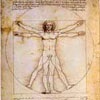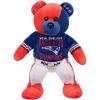Character Casting
One thing that I remember most about trying my hand at the acting business was that I went into every meeting and audition thinking that I was going to nail the role. Hehehe, I was a kid, so why not? Right? I was going to go in there, whether I got the script ahead of time so I could learn my lines by heart, or if I just went in cold. How hard could it be?
So I’d feel all optimistic about my chances, and I’d make sure that I was prepared to give it my absolute best shot, and I would already be imagining myself on the big screen and riding around in limousines and whatever youngster fantasies I could come up with at that time. I’d go in, read my lines, get recorded and hand in my info so they could get in touch with me...and then I’d go home and wait. Occasionally, I’d get a call back or two to come in again or was invited to do some extra work, which was promising, but obviously I didn’t make it to the big leagues. It’s not like it crushed my spirits or anything...it was just nowhere near being as easy and simple as I thought it would be. I had to be older to realize the reasons for that, and over time that was a dream of mine that tapered off to pursue something that I had a bit more control with.
Why mention this? Because when you’re writing a story...even though it doesn’t involve actual actors, visuals, music, or anything technical...casting your characters for your story should take just as much of an important role in creating your vision through the fiction you’re putting out there for your audience to read. In my opinion...it may be one of the most important parts of the process...right up there with plot and dialogue. And in some parts, even more so. Your characters are what can carry or crash a story in its entirety, and if you’re not careful, even a great piece of fiction can wither away to almost nothing if your cast can’t bring all of your hard to work in a fun, intriguing, and convincing way.
So let’s talk about casting the characters in your stories, and what all writers should probably take into consideration before they even get started. K?
I think your characters should ‘move you’ when you write about them. When you think about them. In fact, you (as well as your readers) should be thinking about them outside of writing or reading the story at all. To me, personally...it’s a HUGE compliment to hear someone say that they can’t stop thinking about one of my stories as they try to go on throughout the rest of their day as normal. That makes my day, every single time! And it doesn’t always have to be the main protagonist or the love interest either. It counts for side characters, parents, teachers, or even if one of your characters has a pet that they connect with in a special way, too. But how does someone create a character out of thin air and have them fit a fictional character in a story that never happened in a world that doesn’t exist. I mean, that can’t be easy, right?
Well, when I first began writing my own stories...all of my characters were pretty strongly connected to my closest friends growing up. Boys that I’ve had crushes on, situations that I had experienced myself, jokes that we used to share. However, as I kept going and creating bigger stories and more involving twists and turns in the narrative...I began to branch out a little bit more. I might add a few personality traits from people that I was working with, or people from school that I didn’t know all that well...but ‘this is what I imagine they would be like outside of our college classes or the dorm’, etc. So I started out the way a lot of creative minds start out, by sort of mimicking the influences surrounding me and trying to grab a deeper understanding of them. After that, I began combining ‘this person’ with ‘that person’, or ‘this sense of humor’ with ‘that kind of with and charm’...and eventually it all gets swirled up into a giant melting pot in my mind where I can mix up pretty much anything up that I want when I need it. It’s like having a big witches cauldron where you add a little bit of this, and a little bit of that, create a few of your own ideas, add bits and pieces of myself...voila! I can be creating characters that would be perfect for my story and start putting them together in a way that fits the fiction.
Notice how I started with who they are instead of just what they look like? That comes next.
I think that creating a look for your character should say something about their outlook, their attitude, their interaction with the rest of the world, and the way the rest of the world interacts with them. Take a moment to describe their look when you’re writing, and make sure to keep it consistent with who they are as a person. There’s a lot of room that you can use to play around with this aspect of adding details to your story. For example...if you have a character who’s an introvert and insecure about his looks...how would you portray that with their look and attitude without just saying it out loud in the writing? Maybe they dress in ways that openly displays that insecurity to the rest of the world. Maybe they’re extremely shy and quiet, and sort of stand in a corner by themselves most of the time without saying much to anybody else. Or...maybe their wardrobe consists of wearing all black, with ark make up on their eyes, and their dyed hair flopped down over their faces. Anything to silently deliver the standoffish message of ‘leave me alone’. Can you tell your story with an average kid with blue jeans and a solid white t-shirt? Sure, of course you can. But...if you were making a movie, and you wanted to have this person come off as an antisocial or isolated character...which one do you think would better demonstrate that on screen? Think about what you would do if you were actually casting your own story. This is what I’m talking about.
If your casting doesn’t match your character, your story may not end up having the kind of feel that you’re expecting. A total narcissist character maybe wearing the best of name brand clothes and shoes, an abstract artist might wear something a bit more eccentric or colorful, and someone more flamboyant or camp might be dressed flashy with wrist bracelets and rainbow socks. You don’t have to be openly stereotypical, hehehe...so don’t over do it! But imagine a look for your character that reveals something about them. Let your readers visualize them for themselves, all while keeping those visuals as close to your own as you can when you’re writing.
For example...one of the things that I did, early on, was make my character ‘Justin’ in “Gone From Daylight” extremely beautiful, with blond hair and penetrating light blue eyes. Now, that makes sense in some aspects of the story...but not in all of them. Seeing as he was so badly bullied in school and at home...it’s kind of like...why? How does he not have friends? How has no one approached him for a date or a party or something? I’m not saying that I regret the decisions that I made in the beginning, but looking back, I wish that I could have maybe enhanced or expressed some more of his flaws so his character arc could be explained a bit more. Now, when it came to the story, “Savage Moon”, I was able to internalize and dive a bit deeper into the thoughts of a teenage boy who doesn’t feel like he belongs, doesn’t fit in, has trouble at home…and his later choices can remain in tune with who he is as a character, and yet still match up with who he was in the very beginning. That was a better ‘casting’ choice for me when I look back at it now.
Designing your characters physical appeal speaks just as much to their character as their back and forth with other people in the story does. A metal head might wear a faded ‘fuck you’ t-shirt and ripped jeans. A detective might wear a suit and tie to work every day. Cheap suit? Expensive suit? A high school jock might wear a Letterman jacket and a polished pair of white sneakers, while a little neighborhood kid without much money might be wearing some hand-me-down clothes from his older siblings. Think about whether they have blond hair or brunette. Maybe a redhead. Maybe it’s dyed a different color it has colorful streaks in it here and there. Is it short and worn with a preppy style, or does it hang a bit lower? Is it shaved on the sides? Maybe it’s shaved completely? Do any of your characters have a ‘rebellious’ tattoo on their arms or anywhere else? Are they dressed for the weather? Are they walking around with a t-shirt or a light jacket during a snowstorm or in the rain without an umbrella. You’re be surprised how much these little details can say about your characters without saying anything at all. And that’s the goal, isn’t it?
To show, not tell?
Sometimes the character just isn’t right for the part. It’s not what you’re looking for. And in order to know what you ARE looking for...you’re going to have to figure that out ahead of time. These are some of the things that you should have in your mind when you’re writing your story. Take notes if you have to and you think it’s necessary...but envision it in your mind. The next time you go out in public and think about what you would normally assume from the people around you. It doesn’t mean that you’d be right, because you can’t really judge a book by its cover...but at first glance...what kind of vibes are the people in your current area giving you? If you see a kid with thin rimmed glasses and a button down shirt, and he’s holding a few science books in his arms...what does it make you think of? If you see a guy sitting on a sidewalk shaking a cup full of change, or a couple of high school kids trying to get someone to buy them alcohol from the local store, or see a guy with a briefcase and talking into a cell phone...what info is that giving you? And what happens if you’re totally wrong about that assumption? Hehehe! There’s room for you as an author to play with that as well.
You can be deceptive when it comes to the assumptions you project in your work, which is always fun. You can also use these casting choices to show growth. Like...maybe the boy that started off being shy and introverted find himself a boyfriend...and over time, he begins to dress differently, talk differently, carry himself with more confidence and swagger. These are all tools that you can use in your character casting choices to bring out certain aspects of their personality and their evolution without having to drone on about it with exposition, which will very quickly begin to drag your storytelling down to a snail’s pace. Avoid that at all costs. It doesn’t take much to describe a certain style or appearance of a character in their introduction to your fiction. Just a few sentences. Quick, focused, and concise.
So ‘cast’ your characters for the roles that you plan to put them into, and make sure that they fit. If they’re unnaturally gorgeous...then their surroundings and the world they inhabit should reflect. In “New Kid In School” or “Kiss Of An Angel”...Ariel is extremely cute, but he’s painfully shy, socially awkward, and a bit of a klutz. Hehehe, so his world reflects that. In “Jesse-101”, he’s a Youtube celebrity, and when he goes to the mall, his world reflect that. In “A Class By Himself”, Chris is a rich kid and one of the elites among his peers...same deal. Casting is important. Get it right, if you can. And think about it enough to where they feel real to your readers...which of course depends on how real they feel to you.
Already, that’s all I’ve got for today. I’m hoping you guys get the idea. I get a bit ‘wordless’ sometimes too when it comes to explaining how I see stories the way I do...but I’m willing to bet that most of you who have been writing stories of your own already know how. And if not, keep practicing, and you certainly will. Trust me.
Take care! Love you lots! And I’ll seezya soon!
-
 2
2
-
 3
3







1 Comment
Recommended Comments
Create an account or sign in to comment
You need to be a member in order to leave a comment
Create an account
Sign up for a new account in our community. It's easy!
Register a new accountSign in
Already have an account? Sign in here.
Sign In Now